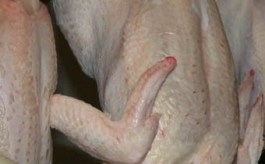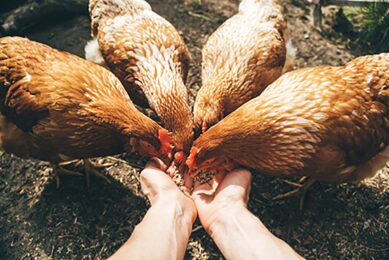ARS: System detects poultry contamination

Technology developed by Agricultural Research Service (ARS) scientists that automatically scans poultry carcasses for contamination has been successfully tested in a commercial poultry plant.
ARS researchers have improved the hyperspectral imaging system so that it can detect small amounts of faecal contamination. ARS scientists Kurt Lawrence, Bosoon Park, Bob Windham, and Seung-Chul Yoon, at the agency’s Quality and Safety Assessment Research Unit in Athens, Ga., developed the system. Hyperspectral imaging is a technique that combines digital imaging with spectroscopy, creating individual wavelengths of light that pinpoint contaminants.
To test the technology commercially, a prototype was installed in a commercial poultry plant to detect contaminated carcasses. The system was developed through a research agreement with poultry-processing equipment manufacturer Stork Food Systems. Carcasses were imaged after evisceration but before washing, at a rate of 150 birds/min. The system ran for several days without hardware or software problems and demonstrated its feasibility, according to Park.
The Athens team is collaborating with agricultural engineer Kevin Chao and biophysical scientist Moon Kim at the ARS Environmental Microbial and Food Safety Laboratory in Beltsville, Md. Using the same hyperspectral imaging technology but at different wavelengths, the ARS scientists in Beltsville developed an on-line imaging system to differentiate systemically diseased poultry carcasses from wholesome ones.
The ARS groups and their industry partner are now merging the faecal-detection and diseased-carcass-detection systems onto a common platform that includes a line-scan hyperspectral imaging camera, lighting, and operating and detection software. Merging the two systems will aid in commercialisation by creating one interchangeable imaging system that can be installed in different locations of the processing line to solve two separate and significant processing problems.
Combining the two systems will allow processors to more easily integrate such a system into their operations. The team plans to have a new prototype tested by the end of 2009.
In addition, the researchers in Athens also developed and implemented a new image-processing method to identify and remove false-positive readings.













